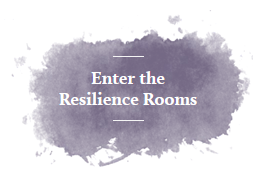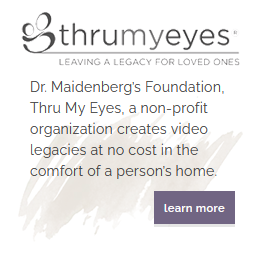The latest statistics from the National Institute of Mental Health reports that approximately 18% of American adults ages 18- 54 have an anxiety disorder in a given year, and approximately 10% of individuals ages 18 and over, will suffer from a depressive illness. The prevalence is real and staggering across the country.
Whether formally diagnosed or not, we all have our moments and can recall bouts of anxiousness and hopelessness which can come on sporadically with varied levels of intensity. We are unique in the way in which we process our emotions. Thoughts, feelings, and reactions can take on an anxious (e.g., worried, phrenetic, irritable, etc.) or a depressive (disconnected, avoidant, helpless, etc.) tone which directly impacts on our perspective of the circumstance and our reaction to it.
We can all be in a similar situation and based on who we are, see and react to it very differently. For example, it’s not atypical for me to see two siblings growing up in the same household perceive their upbringing, parents’ behavior, and the impact it had on them quite differently. These perceptions shape how they see themselves, who they become, and how they choose to live their lives.
We collectively experience an array of emotions, from the comfortable to the less comfortable. These emotions inform us about what’s important to us and how we’re processing a given situation. We tend to prefer the more positive and comfortable emotions for understandable reasons. In addition, our mind pulls us toward protection rather than connection. With good intention, it draws us to be hypervigilant and seek safety and comfort at any cost. This sometimes comes at the detriment of our growth. We’re more inclined to default toward the familiar, lean toward comfortable emotions and avoid uncomfortable ones. We act from a myopic lens based on our narrative and self-perception whether that’s in our best interest or not.
Our reactions can sometimes be impulsive, intense, and counterproductive. Those reactions can then negatively affect our confidence, relationships, and living the life we want. This cycle can often evoke feelings of exasperation, worry, and helplessness.
Cameron, a 21-year-old male reported to me that he found himself frustrated because although he desired to be appreciative, engaged, and motivated, he sometimes found himself to be pessimistic and isolative. Although he recognized that when he is in that “downward spiral” it would be better to express his feelings and assert his needs and challenge himself rather than avoid the discomfort, he inadvertently resorts to familiar behavior and inadvertently sabotages himself. Afterwards he’s left feeling deflated, and even worse about himself and his circumstances.
This scenario is relatable, especially if you have the propensity toward anxious or depressive thoughts and feelings. Based on my new book ACE Your Life: Unleash Your Best Self and Live the Life You Want, which is predicated on the pillars of Acceptance, Compassion, and Empowerment, you can transform your mindset and thinking, and therefore your behavior. By asking yourself specific questions you can get to underlining formative feelings so you can start the process of being more self-accepting, self-compassionate and empower yourself to act from your values, rather than your thoughts and feelings which may not always serve you well.
Key Questions to Ask Yourself to Help Ease Your Anxiety or Depression:
1. Do you tend to lean more toward anxious or depressed thoughts or feelings? Keep in mind that you can have a combination of both or start out with anxious thoughts that eventually lead to more depressive ones or vice versa.
2. What are your specific thoughts? Note them. For example, “I won’t have a good time,” “Things never work out for me,” or “I have so much to be appreciative of, what’s wrong with me that I can’t be content.”
3. What are your feelings or emotions based on those thoughts? For example, sad, overwhelmed, unmotivated, or discouraged.
4. What is leading or tends to lead your thoughts and feelings? For example, some individuals tend to gravitate toward anger/rage, cutting off/avoidance, or worry/fear.
5. What may be compelling the thoughts and feelings? Answering this will help you to uncover the core feelings that are possibly being masked by your compensatory strategies and defenses. Ask yourself for example, “What’s currently making me feel fearful or worried?” “What do I currently experience as unfair or as an injustice?” or “What’s making me feel so overwhelmed or out of control?”
6. How do you typically react and behave when you are confronted with those thoughts and feelings? Take an inventory of your prior responses and assess how its worked for you in the past. Further, consider whether it’s in line with your values, being your best self and living the life you want.
7. How self-compassionate are you? This often doesn’t come naturally, and we aren’t ordinarily taught how to implement or infuse it. Proactively, intentionally, and mindfully connect with your self-compassion. In my previous Psychology Today article, The Power of Self-Love and Self-Compassion: Ten Tips to Enhance Your Longest Relationship-The One You Have with Yourself there are specific tips on how you can connect to and integrate self-compassion.
8. How will you choose to act now? Strongly reconsider your impulses and inclinations in the moment. Be curious, open and willing and take action to branch out into the unfamiliar, the places that may scare and discourage you, and to make mistakes and start over again. These are integral skills that enhance your growth and resilience.
This process requires pausing, contemplation and recalibrating your actions. The key is to acknowledge and be accepting as to where your mind defaults to, notice it, get to the underlining thoughts and feelings, integrate self-compassion, and act in accordance with your values and best self. You’ll be taking the initiative toward feeling empowered, building on your self-confidence, and strengthening the ability to successfully navigate through this process.
To assist you through this journey, utilize my Self-Love and Self-Compassion Guided Meditation to help bring you peace and contentment.
Please subscribe to my YouTube channel for more interviews and guided meditations.
Blog as published in Psychology Today.



